The Tigers Are Back
Why poaching is down in India's famous Ranthambore National Park
Document created 02 November 2017, last updated 06 November 2017

The gateway town to the park is also like nothing I've ever seen. On the tourist strip, signs advertising jungle safaris seem out of place next to the town's river, which is full of trash and smells unbearable. Pigs wade through sewage directly below our hotel window, eating leftovers dropped from the restaurant three stories up.
Eric sees the leopard first: the motion of its paws through trees as it bends to drink. The leopard sees us and bolts. It sprints along a slope on the other side of the creek, its golden coat like satin in the sun, it's powerful muscles pulling at the earth and pushing it away.
We drive on through craggy hills, shallow canyons and dry forest. The park is full of spotted deer, giant antelope, crocodiles, and interesting birds. But the tigers are harder to spot than advertised. In the forest, our guide points to deep gashes in a tree trunk: the tiger equivalent of a carpeted cat scratch. We're seated up high in a jeep but the claw marks are still well above our heads. My desire for a glimpse of orange between the trees is suddenly sedated.
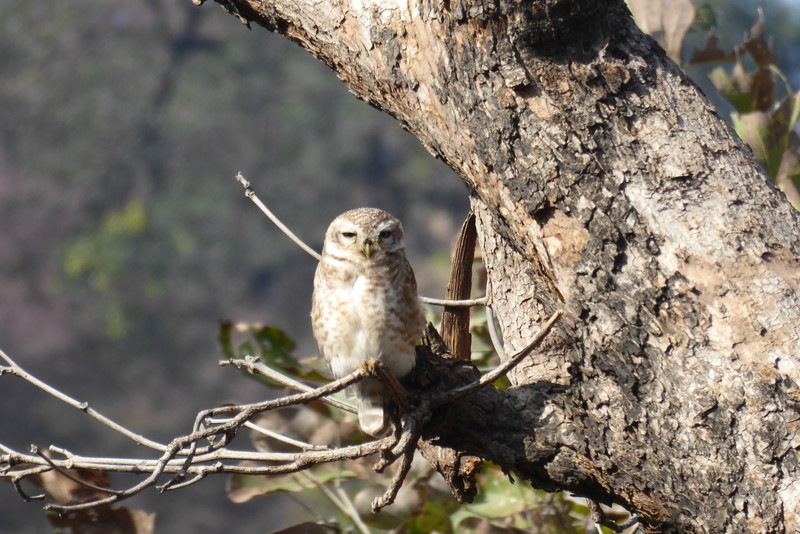
The reserve is a rare sanctuary. The land around it is rural but in a chaotic and very urbanized way. A main road bisects the park. Fields and homes press against its boundaries. It's clear that the park borders are ignored by nearby inhabitants. The forest floor looked swept clean in one wooded part of the park, undergrowth and fallen branches were strikingly absent. It was all piled up against a home near the edge of the park, which we came to a few minutes later. Illegal mining for basic building materials has been damaging tiger habitat as well. But poaching is the biggest threat. The sale of tiger parts contributes to a multi-billion dollar wildlife trade. A tiger skin for sale in China goes for tens of thousands of US dollars.
We spoke with Dharmendra Khandal from Tiger Watch, an NGO based just outside Ranthambore. He's led bold operations around the park, catching seventy poachers and confiscating dozens of weapons and skins. But these days the most successful conservation programs are based on transforming poachers into grassroots conservationists. Tiger Watch now employs people from the very cast that formerly specialized in poaching. They're known as the Moghiyas. The same skills that make them excellent hunters are also make them skilled trackers. As tiger numbers rise inside the park, the challenge has become keeping the cats safe when they invariably cross park boundaries looking for more space. Tigers reach other nearby reserves by employing wildlife corridors, which are like green passageways in the built-up landscape. Armed with motion-sensing cameras, trackers provide information about how the tigers use these corridors.
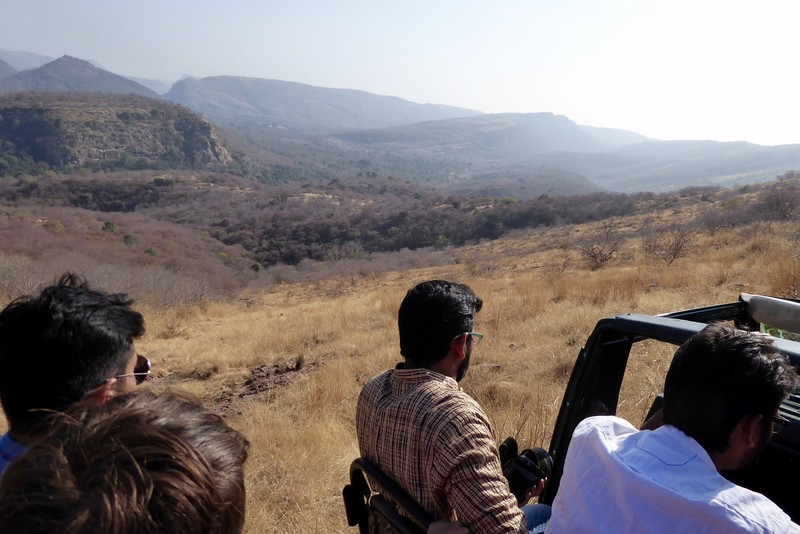
More than 1,400 families have been relocated in the last five years. The goal is 12,000. Moving is voluntary (forced relocation schemes are highly controversial), but the incentives are strong. Each family that resettles receives 1 million Indian rupees in financial compensation, about 15,000 USD, or a package comprised of land and money.
Tiger Watch's newest initiative provides poachers and their families with alternative livelihoods. The NGO has launched programs focussing on education and empowering women, helping kids leave the poaching cycle and teaching disenfranchised widows to support themselves. Other initiatives are helping the Moghiyas enter the tourism industry by training them as guides.
There's always more to do. Tiger poaching has stopped but local communities continue to kill much park wildlife for bushmeat. This includes deer, antelope, wild pigs, birds, hare and porcupine. During our correspondence, Mr Khandal received news that nine wild peacocks had been found poisoned. He says their bodies will be burnt once they have been analyzed. Here too the park is trying to curb the hunting. But the park's large borders and the fact that the animals cross them to raid adjacent crops doesn't help.
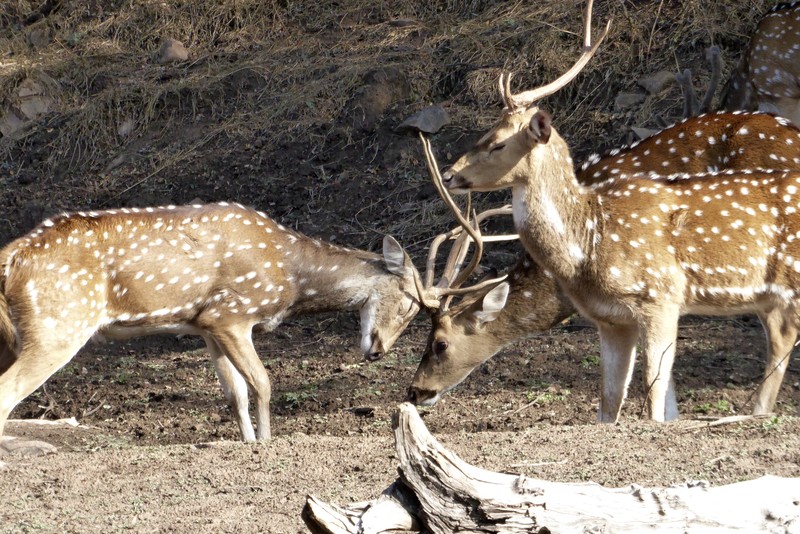
We were also surprised by the lack of effort made to educate visitors. Many safari-goers seemed more excited about having a new background for their selfies than by the park itself. Others clearly felt unreasonably entitled to a tiger sighting. They didn't seem to understand that sightings are rare experiences that should take much patience and luck to achieve. "We came all this way to see tigers and we only saw one leopard," lamented a copassenger. Yet leopards are significantly more rare and equally as magnificent to behold as tigers.
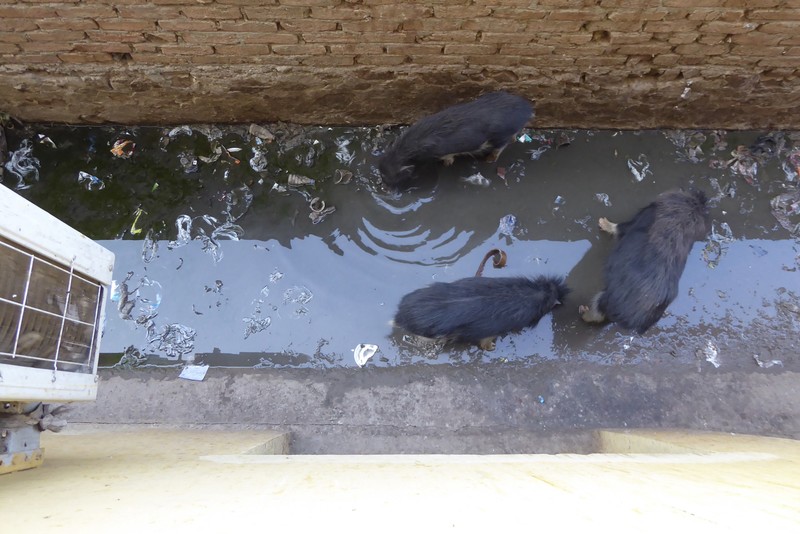
Improving the system won't be straight forward. Organisations like Tiger Watch receive much help in their battle with poaching from the same government agencies that are letting in too many tourists. Likewise, hotels benefit from more visitors and get a cut of the profit when their guests go through them to book tiger tours. But to complete the loop, hotels have also helped finance the relocation programs.
So Dharmendra Khandal is all about prioritizing. Environmental pressure from tourism, he says, "is like dandruff, but poaching and mining is like cancer". So they are fighting the cancer.
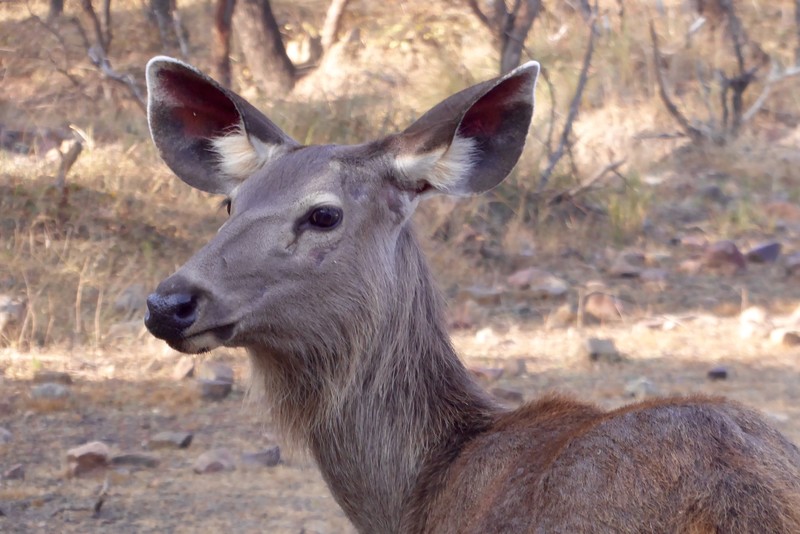
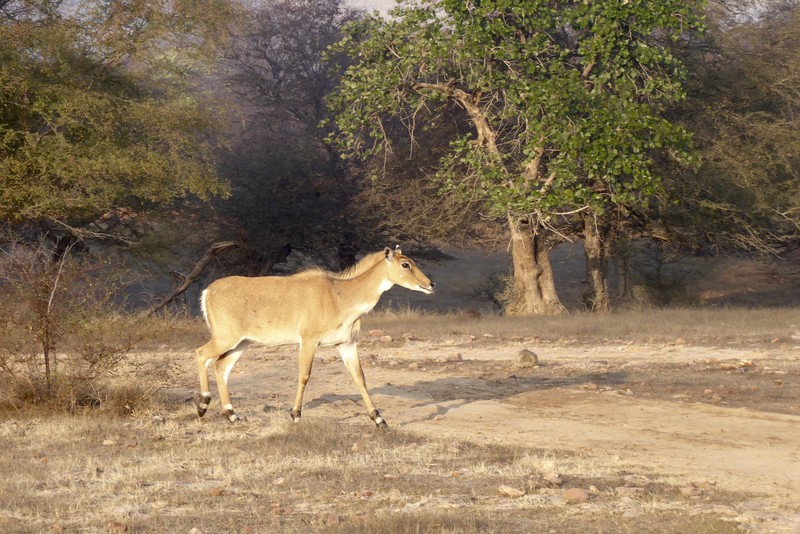
Comments
No comment available for this document
Ratings

Photo by Jean Beaufort, publicdomainpicture.net

Pigs wade through sewage water beneath our hotel window near Ranthambore Tiger Reserve. Photo: Katy Chappaz.

On safari in an eastern district of Ranthambore Reserve. Photo: Katy Chappaz.

Spotted Deer. Photo: Katy Chappaz.

A Nilgai antelope during an early morning drive through the reserve. Photo: Katy Chappaz.

A Sambar Deer. Photo: Katy Chappaz.

A spotted owlet snoozes early in the morning in Ranthambore. Photo: Katy Chappaz.
×
